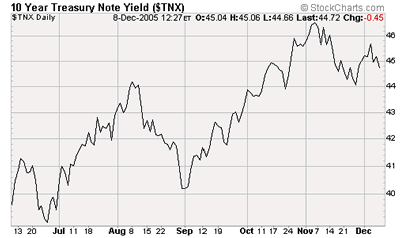| Home | About Us | Resources | Archive | Free Reports | Market Window |
The Next Oil MotherlodeBy
Friday, December 9, 2005
In 1935, British Petroleum (BP) passed on the chance to drill for oil in Saudi Arabia. They didn’t think there was any to be found. And the Saudis believed them. However, Standard Oil of California put down $25,000 for the rights to explore Saudi Arabia. The Saudis saw this as Americans wasting their money, (but they accepted the money anyway). Thanks to seismic imaging – a new technology in the 1930s – Standard Oil of California soon struck oil in the province of Dhahran. The company went on to become Chevron, the second largest oil company in the U.S. Today, as you're probably aware, Saudi Arabia is home to the biggest oil field (Ghawar) ever discovered. And the country produces more oil than any other in the world. It's a story that's been played out hundreds of times. From the invention of rotary drilling in the 1890s to today's "visualization centers" – special rooms that project 3-D images of underground oil deposits – new technology leads to new oil discoveries. And that’s exactly what’s happening today. There are trillions of barrels of oil left in the ground (7.6 trillion, according to the U.S. Department of Energy). The thing is, chances of finding another oil field like Saudi Arabia’s Ghawar are pretty darn slim... unless you look underwater. For example, in the late 1990s, BP (NYSE:BP) and Exxon (NYSE:XOM) decided to put new technologies to the test. They used new deepwater rigs and imaging tools that promised to detect oil 30,000 feet below the Gulf of Mexico’s surface – through water, sand, salt, and hard rock. It seems impossible... a real-time computer-controlled positioning system can keep a 750-foot drill ship over a 2-foot spot on the sea floor. In 1999, they hit pay dirt with an oilfield now known as Thunder Horse. It contains total reserves between 1.4 billion and 3 billion barrels of oil – the largest discovery ever made in the Gulf of Mexico. Now, the rush is on to develop more deepwater and ultra-deepwater basins. The North Sea off the coast of England has also experienced a rebirth. And Chevron (NYSE:CVX) expects to spend $3.4 billion in the next three years to develop fields off the coast of West Africa. In every one of those places, oil majors are going to need the skills of deepwater drilling and service companies. Deepwater oil production is a highly specialized field. There are thousands of companies involved... and billions of dollars to be made. For example, you have the marine drillers, – companies that own the ships. The major players here are Transocean (RIG), GlobalSantaFe (GSF), Noble (NE), Diamond Offshore (DO), and Ensco (ESV). However, they just own the ships... you can’t complete a deep-water well without deep-water services. How do you find the exact position to place an oil well on the sea floor? How do you guide the drilling rods through 5,000 feet of water? How do you fix something at the bottom of the ocean? You call a service company. A few of the big specialists in this area include Global Industries (GLBL), Halliburton (HAL), Oceaneering International (OII), and Cal Dive (CDIS). I’m certain the next oil motherlode will be discovered deep underwater. And I’m certain that some of the companies above will do the drilling and provide the services. It’s only a matter of time before the next big discovery. Consider getting on board. Good investing, Matt Badiali Market NotesTHE MOST IMPORTANT NUMBER IN THE WORLD Market veteran Richard Russell calls the yield on the ten-year U.S. Treasury note “the most important number in the world.” This number is a key for everything financial… from real estate borrowing to corporate borrowing to government borrowing. After dipping below 4% this summer, this yield has climbed and now sits at 4.47%. Rising interest rates reduce consumer spending and make it more expensive for businesses to borrow money… both of which reduce profits. A continued rise in this number would not be good for stocks.
|
Recent Articles
|


